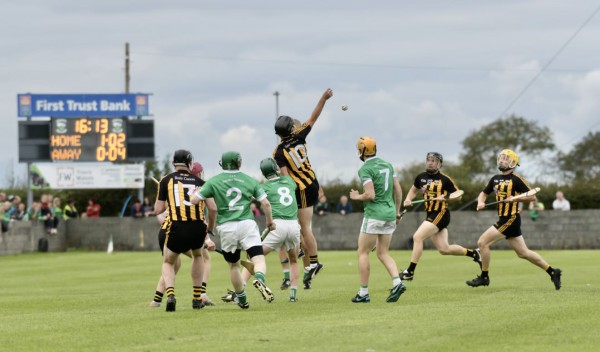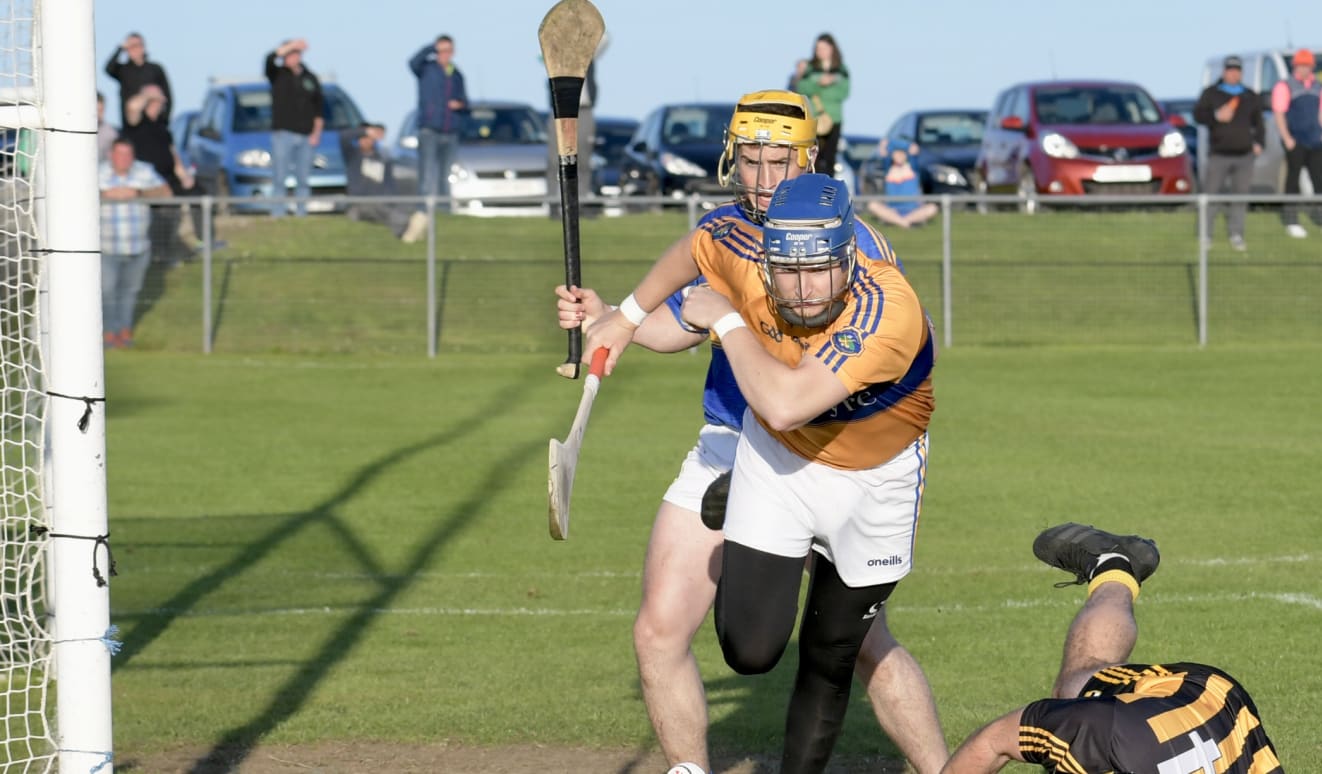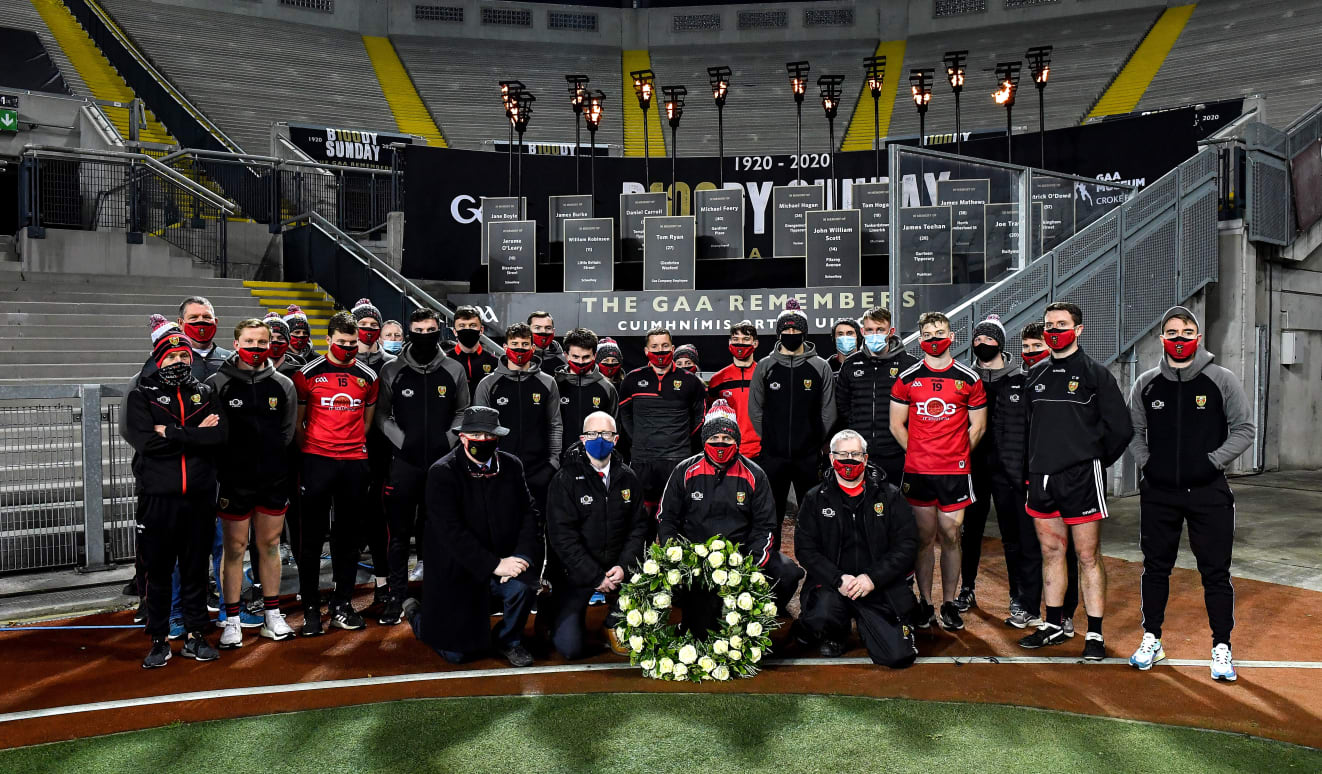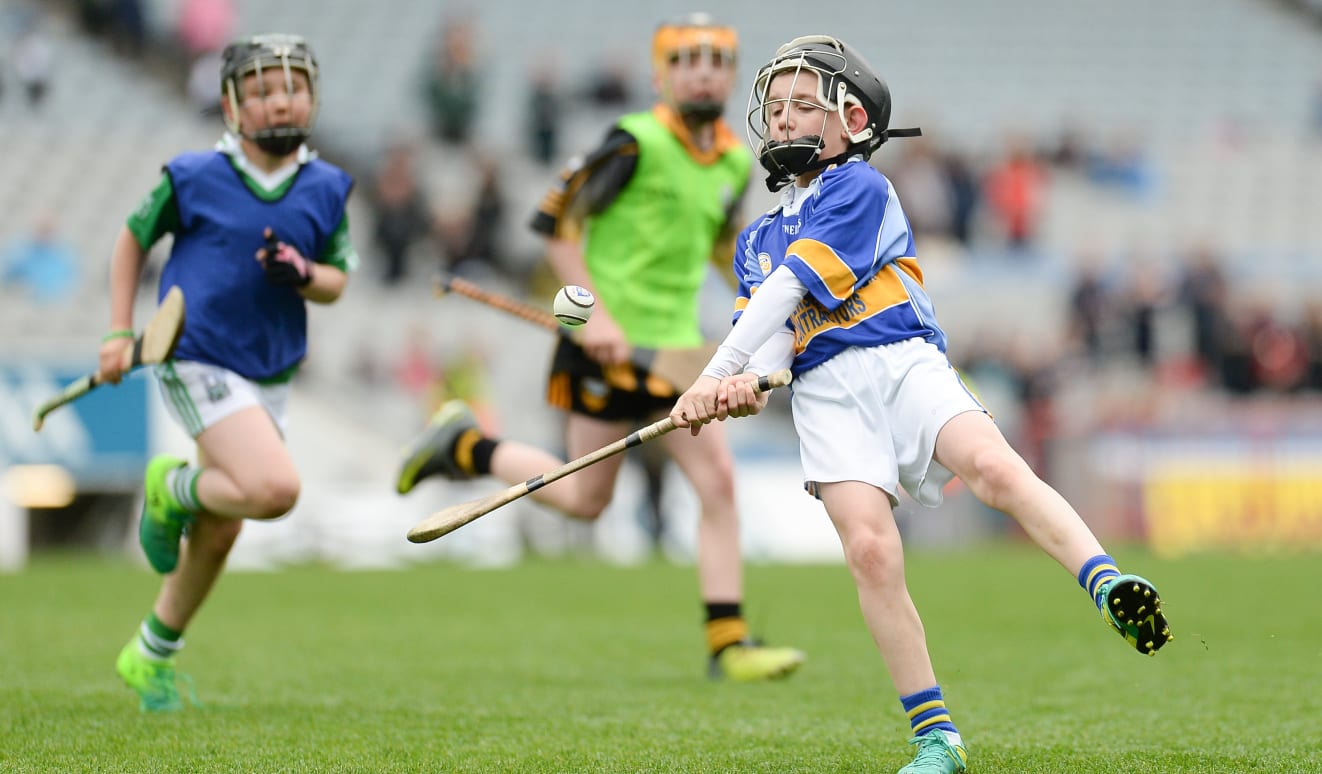Down GAA News
Loughed away from the world: Hurling in Ards
Saturday 17th April 2021

By Kevin Egan
If you grew up with an older sibling, perhaps with just a year or two in between you both in age, this scene might sound familiar.
Constant arguments over toys, games, treats, presents, clothes and pretty much everything else were the soundtrack to your childhood. If you depended on warm, kind words for nourishment, there were a lot of nights that you would have gone to bed hungry. You might look up to your older brother or sister, but at times it felt like they barely looked at you at all, and if they did, it was in the same way that they might look at a fly buzzing around the room and distracting them from whatever they were doing.
Then that day came when you got in some trouble in the schoolyard, and it looked like you might be in for a rough afternoon. Suddenly that sibling came roaring onto the scene, making it clear that if one hair on your head was touched, then there would be hell to pay.
From then on, that memory tightened the bond between you. Even if you knew you’d never be forgiven for verbalising these thoughts, it was always there, long after you both reached adulthood and the older/younger dynamic ceased to be as relevant to your relationship.
The relationship between the three hurling clubs on the Ards peninsula has a lot of the same energy. By virtue of their unique location, isolated on the opposite side of Strangford Lough and connected only to North Down by a long, circuitous drive up through Newtownards and to the south by the Strangford Ferry, they’ve grown up more connected than most neighbouring GAA clubs.

When it comes to the Down hurling family, they’re not part of the oldest generation. Clann na Boirce (Bryansford) and Faugh-a-Ballagh of Newry were the most successful clubs in the early days of hurling in the Mourne County, but gradually the balance of power shifted to the east and to Kilclief, a picturesque rural club on the coast of Strangford Lough that has had a disproportionately significant influence on both of the main gaelic games sports in the county.
However while Kilclief were reaping a rich harvest on the field, winning 23 county senior hurling titles in 44 years from 1912 to 1956, the seeds of success were being planted on the far side of the Lough.
Proximity to Kilclief and the spill over of some hurling people onto the Ards peninsula, combined with the absence of a strong presence from any other sporting culture, had led to a burgeoning interest in hurling in Ards, but it took a chance happening of fate to accelerate that process.
Between 1912 and 1917, the work of an agricultural inspector from Tipperary called Ned Purcell saw him take up residence in Portaferry, and he was to be the evangelist that changed the hurling landscape in this part of the world forever. Purcell quickly set about teaching the sport to an enthusiastic group of locals, and while the practical matters such as sourcing hurls were a minor impediment, that was easily overcome.
Colum Conlan is the chairman of Portaferry GAA club today, and he explained how the club took to wearing the Tipperary colours, but because of their location and the difficulty in travelling for frequent games, Portaferry developed what could be described as its own ecosystem in order to keep developing the sport.
“Locals such as John Emerson, John McCullough, John and Eddie Dumigan and Fr. Toal carried on where Ned left off”, he explains.
“Such was the interest that four teams from Portaferry competed in the Ards Gaelic Association during the early Twenties. This was rewarded with Carraig Uladh's first S.H.C. title in 1926 and their winning of the Antrim League title in 1929."
The club’s outlook continued to broaden and the tradition of success was sustained in both Antrim and Down leagues in the Thirties.
However the war years, with travel curtailed, saw the Ards thrown once more back on its own resources, leading to the formation of clubs in Ballycran and Ballygalget with wholehearted assistance from Portaferry.

Marguerite Fowler’s mother and uncle, Theresa and Hugh Gilmore, both have central parts in the story of hurling in Ballycran – Hugh as one of the instigators, and Theresa as the woman who put a huge amount of work into compiling the history of the club for the “50 years in Black and Amber” book that tells their tale.
“In 1939 Hugh and his friend Pat Hamilton approached the headmaster of Ballycran School, Master FJ McKenna, about the possibility of starting a hurling team in the parish” Marguerite explained.
“The colours of Black and Amber were chosen in tribute to Master McKenna’s long-time friend – Kilkenny’s Lory Meagher. Lory Meaghar was up here several times to help as the club got going, while around five players from Portaferry came down as well to make sure that the early enthusiasm and drive was given an extra helping hand.
“My daddy (Pat Gilmore) and uncle Tony were also on the early teams, and the sport became a very popular hobby for young men and boys here, since there really was nothing else going on. I remember Hugh talking about cycling up to Belfast to get sticks, and he and others were happy to do that if that’s what it took to keep playing the game.
“The committee back then was small, but they were hugely committed. There’s incredible respect in the club for what those men did, and that’s why compiling the club history was so important to us, to recognise that. Today we’ve incredible new facilities, a 3G pitch and gym here at the club grounds (named McKenna Park in honour of Frank McKenna) and they are the product of a huge community effort, albeit we haven’t had the chance to open it properly due to Covid-19, and that all stems from the work that was put in to get things started."
Six miles down the road in Ballygalget, the same story was happening. Initially known as Newcastle John Mitchels, Portaferry also reached out to what is now the Ballygalget club and they too took their place in the Ards hurling league and slowly began to build.
(More details on the growth of hurling in Ballygalget can be found in Oral History series here on GAA.ie - https://www.gaa.ie/the-gaa/oral-history/members-ballygalget-gac/)
By the time the Ards league fell away at the end of the war, Ballycran were now the leading power on the peninsula, and they added their name to the county championship roll of honour for the first time in 1949. Ten years after that, Ballygalget took their place on top of the tree locally, and since then, the three clubs have shared every Down championship title between them.
“There’s a huge social aspect to the GAA out here in Ards, it would be very important to us to get everyone involved in some way or another, but ultimately that all feeds into winning the Jeremiah McVeagh cup”, said Fowler.
“We’ve lost a lot of players to emigration and for other reasons, but playing 'hurley' is still the main activity here on Ards, for all three clubs.

However, while there is a recognition that the history of the three clubs are intertwined, and also that the presence of three clubs that are all striving to raise standards to new levels helps to maintain their stranglehold on the local championship, there is still a long history of playing games in Antrim to try and broaden their hurling experience, for underage and adult players alike.
Colum Conlan was heavily involved in the underage scene in Portaferry before taking up the role of chairperson, and he feels that their co-existence with Antrim is essential in giving a full season to their players.
“We do have players that play football with a couple of other local clubs here, depending on where they go to secondary school, and that’s great if it happens, the main thing is that young teenagers and children are active in some form” said Colum.
“But there are lots more who don’t really play anything else, so playing in Antrim is vital to make sure that everyone has 15 or 20 games in a year. If you were trying to do that with just the teams here in Down it would get very repetitive.
“It’s only 45 minutes up the road to Belfast, where we’d play a lot of underage games in the South Antrim league, and then if one of the adult teams had a game up in the glens against Dunloy, Loughgiel or someone like that, we might try and arrange an underage challenge game as well to make a day out of it.
“The tradition of playing in the Antrim leagues goes back nearly 100 years now, it’s a big part of what we do here and it seems to be working. On Tuesday there we had club training for all our adult players, and because the county team can’t start back yet, we had 45 out on the field. Lots of those will be training with Down after this week, but we’ve kept our numbers up, and the sport is as popular as it ever was out here."
That final sentence is true largely because of the incredible work of some fantastic trailblazers and evangelists a lifetime ago, and it has created a unique sub-community of the GAA where there is a ferocious rivalry, but behind it all an incredible sense of togetherness.
These three clubs may have grown up together and matured into successful entities, but the sibling rivalry never goes away.















